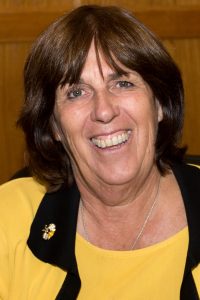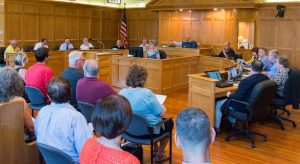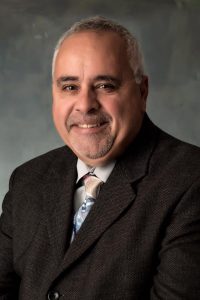WESTFIELD—The city will be sending a resolution to the state legislature to help convert certain private ways into public roads after the City Council voted in favor of the resolution Thursday.
The City Council voted 11 to 2 in favor of the resolution during their Nov. 16 meeting. The resolution is now set to go to the state legislature in Boston where it will be decided upon and sent back to the city. The resolution could affect 61 total streets in the city, though each roadway would still have to go through an individualized process to be accepted as a public street.
“I’ve been working on this for 12 years, since I got on the council,” Ward Four Councilor Mary O’Connell said the day after the meeting. “It’s a system that’s broken, what we have currently.”
“I feel as if it’s a good solution for a pathway towards accepting private ways as public roads,” she said.
The resolution would move to allow the city to accept the private ways listed in the resolution as public streets. One potential benefit is that as streets are accepted as public ways, it can add to the amount of Chapter 90 funding the city receives from the Massachusetts Department of Transportation (MassDOT).
According to At-Large City Councilor David Flaherty during the meeting, Chapter 90 funding is currently set at $3,930.14 per mile per year for cities. This could mean that the private ways that are turned into public ways may provide additional funds to the city.
A total of 61 streets are part of the list, with those streets coming from wards as follows:
-Ward one, 12 streets
-Ward two, one street
-Ward three, zero streets
-Ward four, seven streets
-Ward five, 21 streets
-Ward six, 20 streets
According to O’Connell during the meeting, the roads chosen were “low-hanging fruit.”
“Streets were basically the low-hanging fruit, they came from discussions with the department heads,” she said. “These are the streets that seem to make a lot of sense to put into this program.”
According to Ward Six Councilor Bill Onyski, who responded to Ward Three Councilor Andrew Surprise’s inquiry of how the streets were chosen, it was based off of the private ways having metes and bounds.
“One of the big tenets of getting a private way to a public way is whether it has metes and bounds recorded, which is essentially a survey,” Onyski said.
Typically, these are newer streets, Onyski said, which is what the list is principally made up of.
“Eventually we will go back to these other ones that aren’t as easy,” he said.
At-Large Councilor John Beltrandi voiced concern on how these streets meet the requirements but were unable to go through the process.
“Those streets, a number of them, shouldn’t even be on this list,” Beltrandi said. “Should just go through the process.”
He added that previously he recalls the council taking votes on some of the streets.
Onyski though, said that the process is not automatic and may not always occur. Ward Five Councilor Robert Paul also noted that steps in the current process may become cumbersome, such as when attempting to get signatures on deeds of properties when those properties include a portion of the roadway.
“The process makes it easier, it’s a good process,” Paul said.
Ward Two Councilor and Legislative and Ordinance (L & O) committee chairman Ralph Figy noted how complicated the issue was for his committee.
“This is probably the most complicated issue that the L & O committee has faced since I’ve been a city councilor,” he said. “And I want to compliment Councilor O’Connell for sticking it out for 12 years.”
Figy said that the process currently is complicated and cumbersome, including having a department within the city that will not sign off on a private way becoming a public way unless there are “appropriations attached to it,” which he said the City Council cannot provide.
Figy also brought attention to a memo from the city’s law department, which said that this was not the way to go through the process.
“It’s difficult, I know the city of Chicopee did this and they still need to go address each individual street one at a time, which is what we would need to do if we did this,” he said.
At-Large Councilor Dan Allie said that he echoed what Figy had said, and added that there are portions of the city that are unable to hook up to certain city services currently, specifically underground services, but that this could help with that.
“A huge part of the city that receives no city services, so we have to start moving forward on this stuff,” Allie said.
Figy later added that the private ways do get city services, such as snow removal and trash pick-up and that by accepting them as public ways the city also accepts the maintenance and liability. Allie reiterated however, that he was referring to underground services.
Surprise also said that he would support the motion, in spite of the lack of streets from his ward, Ward Three, on the list. He said that he would work to get the metes and bounds of streets within his ward settled.
O’Connell said that there was an item that she agreed with the city’s law department on, which is that this is not an automatic process. Still, it gives hope.
“It’s not an automatic but at least it gives folks a realistic way,” she said.
After the meeting, At-Large Councilor Brent Bean, who was also part of the initial process along with O’Connell for this, said that he hopes that this will help them speed up the process moving forward.
“Hopefully this is a step in the right direction and hopefully simplifies the process moving forward,” he said.




